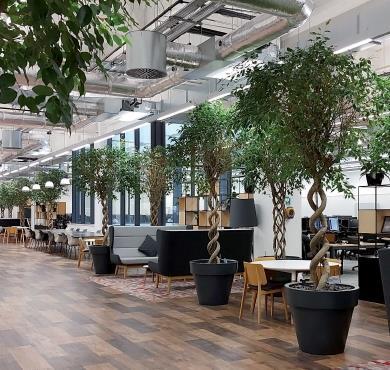Lighting Guide 7 gives advice on the design and operation of office lighting schemes and installations for all users of office buildings

The Society of Light and Lighting (SLL) has launched the Lighting Guide 07 (LG7): Offices.
An update from the previous edition published in 2015, the new guide considers hybrid working and addresses the uncertainty around how office space will be used in the future.
With hybrid working and the use of portable devices becoming the norm, workers are spending less time at their desks and in the office. As a result, this revision of Lighting Guide 7 includes home office lighting advice.
The guidance also includes a chapter focused on the impact of embodied and operational energy. The section highlights the general considerations that may apply to the amount of energy used by an office lighting installation, as well as the energy and carbon used in the manufacture and distribution of luminaires and the raw materials used to produce them.
While numbers will vary between businesses, lighting represents a significant part of energy use which must be considered when designing an office lighting installation.
The guidance encourages the re-use of equipment where possible. Where luminaires are not suitable for reuse as complete units, it may be possible to have new control gear fitted into existing luminaire bodies.
The SLL has produced TM66: Creating a circular economy in the lighting industry, which provides more detailed information on reusing existing equipment.
The illumination levels recommended by this guide reflect those in the British Standard for Light and Lighting – Lighting for Workplaces. It offers guidance that considers both the needs of individuals as well as the need to reduce energy use where reasonable.
In the UK, office lighting levels should be provided at a level that is safe, comfortable and allows an individual to carry out their tasks efficiently.
The approach reflected in LG7 is centred around a base level of illumination, which is then either increased or decreased following an assessment of the individual occupants and use of a space through the application of context modifiers.
















No comments yet